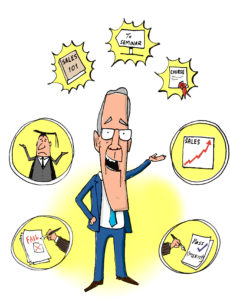Post Statistics
This post has 416 words.
This post has 2588 characters.
This post will take about 2 minute(s) to read.

- Start the meeting at the end, as in “When the attendees leave the meeting we will have achieved the following…”
- Always remember that meetings are held to make decisions and not to discover information about a topic. So identify any specific information required to achieve the result and have that distributed to all the attendees well before the meeting. Then all attendees can read and comprehend the information in time for the meeting.
- Use action verbs to describe the specific results you wish to achieve.
- Establish a high (A) or a low (B) priority rating for each meeting outcome and then number each specific result within each rating.
- To determine the items of the Agenda for a specific meeting always ask the question “If this item was not covered by the meeting what would the consequence be?” Those consequences will determine if the item should be in the meeting agenda.
- Sequence the remaining items in priority. This will form the basis of the agenda.
- Who needs to attend the meeting is determined by the items in the agenda and the need to have people at the meeting who have the knowledge, authority or skill resource to enable the meeting to come to a decision.
- Define how long the meeting is to run for. Now estimate the time required for each topic in the agenda. Carry any excess items or reschedule items to a new meeting agenda that you will keep track of in Outlook Contacts free text field.
- Email the proposed meeting agenda (label as draft) to all attendees and suggest a date start/end time and location. Identify all the roles/responsibilities that affect people attending so that they know and are accountable.
- Because meetings need to have an audit trail as to how the outcome was realised, all changes to the meeting agenda needs to be in writing. Only accept emailed alteration responses to the proposed meeting agenda.
- Every meeting needs to have a Chairperson who runs the meeting, a Time Keeper who keeps the meeting to the allocated time and a Secretary who records the meeting outcomes and action points.
- At the end of the meeting, take a few minutes to evaluate the meeting. Note what went well, any problems to overcome and their solutions. Refer to evaluations of past meetings when planning a new one, to ensure high quality. Remember that meetings get better with practice.
- Before closing the meeting, arrange the date, time and location for the next meeting.
- Have fun.



